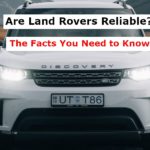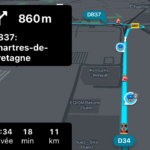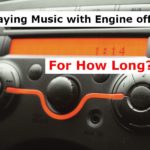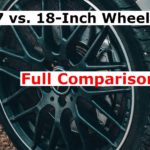Noise After Wheel Bearing Replacement (Solved)
Noise coming from the wheel bearing may be mistaken for tire noise. This is because the noise is very similar. In this article, we will discuss the causes and solutions to noise after wheel bearing replacement. Let’s go!
What is the Function of a Wheel Bearing?
A wheel bearing helps form a connection between the axle and the wheel. It is an extremely important part of the entire wheel assembly.
In a wheel bearing, a set of tapers (tapered bearings) or steel balls (ball bearings) are held in place by a metal ring. This component helps reduce friction and allows the wheel to rotate smoothly.
Wheel bearings are safety components that have been specifically designed to help sustain axial and radial loads.
These loads are caused by breaking and cornering forces, acceleration, and gravitation. For this reason, it is very important to replace wheel bearings if there is some issue with them.
Also read: The Cost of Replacing a Wheel Bearing (Ford, Honda, etc.)
What Causes Noise from Wheel Bearing After Replacement?
If there is an issue with your wheel bearing, you should replace it. However, they may continue to make noise even after replacement. Let’s discuss some of the major reasons for this noise.
Improper Installation
If you got your wheel bearings replaced recently, they should be working smoothly. However, if they are still making noise, it might be because of improper installation of wheel bearings.
Wheel bearings are sophisticated pieces of equipment that are installed with proper preload and torque specifications. If limited defined for these parameters are not maintained, the bearing will not be installed properly.
As a result of this anomaly, you might hear noise after bearing installation. Hence, it is highly recommended to visit a skilled mechanic to get a bearing replacement.
Manufacturing Defects
Manufacturing defects in wheel bearing assemblies can cause a variety of problems. For example, if the outer race is not properly seated in the housing, it can cause the bearing to seize, which can lead to uneven tire wear or even a complete loss of vehicle control.
There are a few key things to look for when inspecting wheel bearings for defects. First, check the surface of the races for any nicks, scratches, or other damage.
Second, look for any signs of excessive wear on the bearings themselves. Finally, make sure that the races are properly seated in their respective housings.
If any of these defects are found, it may lead to noise, vibration, and other problems. In some cases, it may be necessary to replace the entire wheel bearing assembly.
Mismatched Specifications
It is important to choose the right wheel bearings for your car. This is because each car requires a specific type of wheel bearings.
If you install the wrong kind of wheel bearings in your car, they will begin to make noise even if they are brand new. The noise is produced because the wheel bearings are unable to work properly in your car.
Driving Through Deep Water
Wheel bearings are specifically designed to prevent the build-up of friction or pressure. They are installed using a petroleum-based lubricant at the factory. This lubricant helps reduce friction, but cannot prevent water from getting through.
Therefore, your bearings are prone to moisture exposure if you drive through puddles or on a flooded street. Moisture exposure renders the lubricant ineffective.
This leads to increased friction in the wheel bearings that causes wear and tear quite early. The increased friction leads to noise coming from the wheel bearings.
Improper Lubrication
Wheel bearings must be lubricated properly during installation.
If you do not put enough lubricant in the wheel bearings, they will be prone to the effects of increased friction. This might cause the recently replaced wheel bearings to make noise.
Unbalanced Tires and Bad Shocks
The entire wheel system depends on the shocks, knuckle arm, lower joint, lower arm, and wheel bearings.
If your tires are not balanced, any of these parts could get damaged leading to noise coming from the wheel bearings.
Also read: 18 vs. 19-Inch Wheels: Full Comparison
What Does a Bad Wheel Bearing Sound Like?
If your wheel bearings are malfunctioning, they may sound as if you’re driving on a highway’s shoulder over a rumble strip. Initially, the sound may not be as intense but it might get worse over time as the bearing wears down.
Remember when you were riding your bicycle as a kid and the wheel was attached with a playing card? The playing card would hit the spokes when the wheel would rotate and make a noise. The noise from a wheel bearing is almost similar.
Try weaving in your lane by turning left and right while driving at around 40 mph on an empty road. This will help amplify the sound so you can understand where the noise is coming from. This is because physics will allow more of the car’s weight to be transferred toward one side.
How To Diagnose a Bad Wheel Bearing?
When a wheel bearing begins to fail, you will hear a grumbling noise coming from the bad wheel bearing. However, it is difficult to isolate this noise as it gets mixed up with road noise. More often than not, this noise is mistaken as coming from a worn-out tire.
- Therefore, it is better to check the condition of the suspensions as well as the tires for excessive wear before you move on to diagnosing the bad wheel bearing. This is because worn suspensions and tires may create a noise similar to a worn-out wheel bearing when you’re driving the car.
- It is also important that you check the tire pressures. This is because tires that are not completely inflated make a rumbling noise too. This noise is quite similar to that of a bad wheel bearing. If your car has a bad wheel bearing, you might not hear squealing or squeaking sounds.
- If you rotate the tire with your hand, you might hear high-pitched metallic noises in case of a worn-out wheel bearing. This noise is produced when the wheel bearings rub against each other.
- You can also diagnose a bad wheel bearing by taking a jack and using it to lift the car. Make sure the tires are off the ground. Now move the tires in a horizontal direction and then in a vertical direction. If the wheels have some free play or if they wobble, this means that the wheel bearings are damaged and need to be replaced.
What are the Risks of Ignoring a Bad Wheel Bearing?
It is recommended that you should not drive a car with bad wheel bearings. This is because bad wheel bearings not only put you at risk of an accident, but also put other people around you at risk of injury.
Bad wheel bearings could lead to difficulties in steering your car as well as issues with the wheels of the vehicle. Along with the danger, bad wheel bearings also put added strain on the transmission, CV joint, and hub.
Failing to replace your wheel bearings in time might lead to an increase in your auto repair services bills. It will also cause your car tires to wear out more quickly so you will have to get them replaced too. Hence, ignoring a worn-out wheel bearing will put you in danger and will also add to maintenance costs.
How To Fix Wheel Bearing Noise?
Want to fix a bad wheel bearing on your own? It is recommended that you use an online guide or a workshop manual for instructions. Your problem might be solved by just lubricating the wheel bearings and tightening them.
However, try to get expert guidance before replacing parts on your own because it is difficult to press out the bearings and undo seized nuts.
It is also wise to compare the price of a complete hub assembly and a wheel bearing kit. If the price difference is not too much, it is better to swap out the entire hub assembly instead of wasting money on replacing the wheel bearings all over again.
The prices of different parts depend on various factors. However, the best part is that one kind of wheel bearings may be used for a variety of cars.
It is better to buy wheel bearings online as they cost less than those sold by motor factors or dealers. However, don’t forget to ensure the authenticity of the brand before making an online purchase.
Replacing the Bearing
Follow the steps below to replace the wheel bearing on your own:
- Begin by parking your vehicle on a flat surface. Put wheel chocks on all other wheels except the wheel that you are working on.
- Use a wrench to loosen the lug nuts. Lift the wheel using a wheel jack.
- Take off the wheel by removing the lug nuts.
- Use a socket wrench to remove the brake calipers.
- Remove the castle nut, cotter pin, and dust cover. The dust cover is basically a small metal or plastic cap that helps protect the components of the rotor. It can be removed using calipers. The cotter pin and castle nut are beneath the dust cover. They can be removed using pliers.
- For removing the rotor, remove the outer bearing first and then the rotor. You may use a rubber mallet if the rotor gets stuck.
- The wheel bearings are placed behind the hub. To reach them, take off the old hub by unscrewing the hub bolts.
- Take apart the hub assembly.
- Break the races using a hammer and grinder or chisel. After this, clean the knuckles that are placed within the bearing assembly. This part is very greasy so make sure you have rags to handle the grease.
- Set the new races by hammering them in gently. Install the new inner assembly after greasing it properly. The new bearings should be properly pushed in and aligned.
- Re-install all the parts that you removed in reverse order. Finally, lower the car from the jack.
References
cartreatments.com, thenoisefix.com, moogparts.eu, themotorguy.com, wrench.com, autoexpress.co.uk, gmb.net






